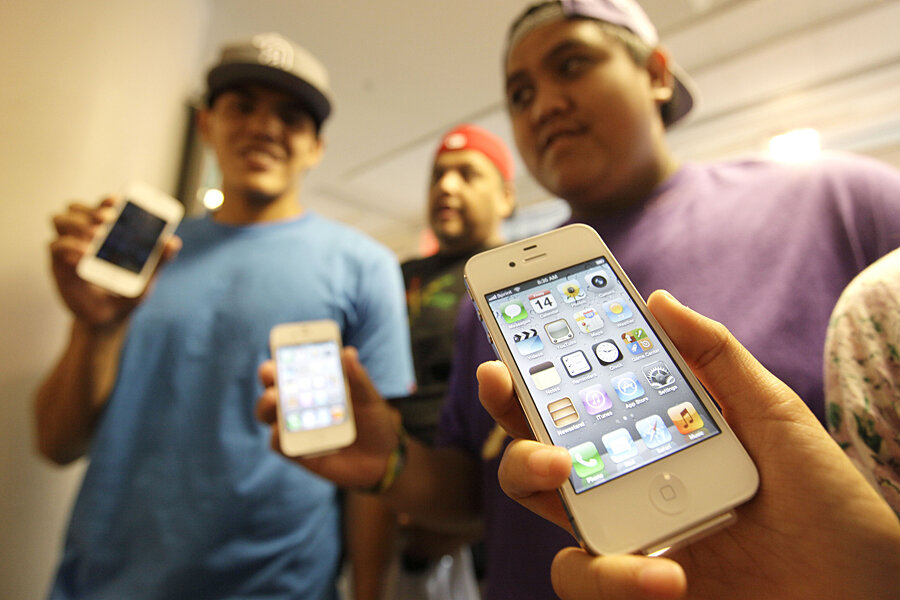'Sponge-like' battery: Coming to a smartphone near you?
Loading...
For years, manufacturers have used graphite for one of the electrodes in lithium-ion batteries, but have hankered for a way to replace graphite with silicon, which can hold 10 times more energy.
Yet there’s a snag: Silicon swells when it holds a charge. Give it too much juice and it explodes
Not any more. In a paper published July 8 in Nature Communications, Ji-Guang “Jason” Zhang said he and colleagues at the US Department of Energy’s Pacific Northwest National Laboratory (PNNL) have developed a porous, sponge-like form of silicon that gives the element “the room it needs to expand without breaking.”
Here’s how that lithium-ion battery in your smart phone or laptop works: The battery has two electrodes, a positively charged lithium electrode and a negatively charged graphite electrode. The battery generates electricity when electrons move along a wire connecting the two electrodes.
The movement of the electrons is controlled when lithium atoms, or ions, also move between the two electrodes through a conducting matrix called an electrolyte solution, which contains the two electrodes.
Anyone who owns a smart phone knows that his or her batteries simply don’t hold enough electricity long enough. That wasn’t lost on Zhang and his PNNL team, who knew that if they could keep silicon electrodes from exploding from a generous charge, the batteries could last around 30 percent longer than traditional lithium-ion batteries. (Related Article: How Food Can Build Better Lithium Batteries)
So far, researchers have tested smaller amounts of silicon to replace graphite electrodes in hopes that their size would leave them room to expand, but their efforts haven’t panned out. Zhang and his team approached Michael Sailor, a chemist at the University of California who has developed a way to create porous silicon, and then they coated the samples with conductive carbon to make electrodes.
Zhang’s team also turned to the Environmental Molecular Sciences Laboratory at PNNL, where materials scientist Chongmin Wang specializes in electron microscopy. Wang observed that while being charged, the silicon electrode expanded as usual, but the expansion filled the voids in its structure.
He observed that the periphery of the electrode expanded too, but only by 30 percent, not the dangerously explosive 300 percent common with a solid silicon electrode. What’s more, the silicon electrode kept more than 80 percent of its original storage capacity after more than 1,000 charge/discharge cycles.
These observations not only confirmed Zhang’s original guess that a porous piece of silicon could hold a charge without exploding, it also gave the PNNL team a better understanding of the physical and chemical changes in batteries as they charge and discharge.
The PNNL team’s work isn’t over, though. Their next project is to use the silicon sponge in a larger battery prototype with an eye to developing a cost-effective production process that would bring such an efficient batter to market.







